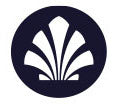5 criterias to estimate the technicity level of a neoprene wetsuit
To choose a neoprene wetsuit is not an easy thing to do.
We know that many technical details are not really clear and precise for many of you.
Marketing/publicity often put one technical element in the light but it is important to fully understand how is made a wetsuit?
For example, the inside of a wetsuit will tell you a lot about its technical features.
This is our guide for a detailed explanation on the different characteristics of neoprene wetsuits.
THE NEOPRENE
Wetsuits are made of neoprene. The water, locked in between the layer of neoprene and the body, will heat to reach your body temperature.
The neoprene quality, which is the black layer covered with 2 layers of fabric, is primordial but difficult to apprehender.
Made from limestone -for an ecological impact- for every Saint Jacques wetsuits, this neoprene quality offers elasticity, water resistance and durability.

Yamamoto neoprene in which we have decided to make our new Stan and Clovis collection is the referential one.
The closed cells process of the Yamamoto neoprene is what makes it extremely durable while remaining flexible. This neoprene absorbs only 2% of its water weight (waterproof at 98% against 70% for a neoprene made of petrol) which keep the wetsuit light even when wet. Your wetsuit acts like a second skin and will allow a great range of motion.

In terms of flexibility, do not fall in the trap of only considering the stretch feature of the neoprene! It’s important to consider its stretch resistance called Modulus.
Let me explain: if 2 different neoprene can stretch up to the same length (from X to Y cm), one will need a lot more energy than the other one to reach Y cm.
The lower Modulus is - meaning that you don’t have to use strength to stretch the neoprene - the better.
Human skin has a low modulus: it can be stretched with a small amount of energy.
When the neoprene has a high modulus, people have the feeling to wear a wetsuit made of rubber.
When modulus is low, the wetsuit becomes a second skin.
Quality of outer and inner jersey (fabric that is covering the neoprene) is also important when we talk about elasticity and comfort.
High end jerseys are smooth, silky and almost hydrophobic in opposition to a rough low quality jersey.
Always check the feel of the inside of your wetsuit.
Then come the choice of the thickness of the neoprene. It depends essentially on the water temperature and the seasons. It is also important to take in consideration the air temperature and the wind fact which can affect the temperature feeling.
There are different thickness of neoprene.
When there are two numbers, the first one is the thickness of the neoprene on the torso, back and legs. And the second one is the thickness of the neoprene on the arms and shoulders.
SEAM TYPE
The seam type is an important point in your choice of neoprene wetsuit. It is the element which will make the difference between several neoprene of the same thickness.
Here is a list of the different seams we often find:
Flat lock seams are going through the neoprene and are usually used on summer or mid-season wetsuits, because less waterproof. This type of flat seam is flexible and comfortable on the skin.

GBS – Glued & Blind Stitched seams are glued and only stitched on the outside. Those seams are only partially going through the neoprene, reducing water entry and internal rashes. This type of invisible seams, which are used on all our Saint Jacques wetsuits, is the best in term of water resistance, comfort, and stretch.

Taped seams for more sealing. Easy to spot, the inside seams are lined with a waterproof tape of fabric to stop water entry.
They can also be on the external side of the wetsuit, then called “liquid tape” but often less resistant to wear and tear.
This tape has to remain as flexible as possible or it will reduce elasticity around the seam. Nevertheless, it offers more durability by protecting the seam.
You are looking for the best ratio: the more you are looking for a waterproof wetsuit, the more you lose elasticity, hence the importance to use high end materials: waterproof but flexible.
THE PATTERN

A wetsuit is made of several panels which are put together.
The fewer panels you have on your wetsuit, the more elasticity as you will find bigger neoprene pieces without stitches “breaking” its elasticity.
However, it is the strategic assembly of those panels which will allow a second skin design and a good fit without folds.
The Saint Jacques range is especially designed to offer a natural fit with a clever assembly of panels and stitches.
ZIP TYPE
Here are the two different types of zip closing you can find on neoprene wetsuits.
Back zip: A zip in the back, making the wetsuit easy to put on.
Front zip or chest zip: A zip under the collar, on the chest, in order to have more flexibility and sealing but making the wetsuit harder to put on.
Bear in mind that we often link back zip wetsuit with low quality. In reality, most of the brands are using back zip patterns on school models because they are easier to put on for beginners. They are also using cheaper materials and basic finishes in order to offer an attractive price.
At saint Jacques, we are using the same materials (super stretch limestone neoprene) and same finish (GBS taped seams) for both our back zip and chest zip wetsuits.
Players can then choose their wetsuits based upon their preferences.
They are several types of front zip mecanisms: some are not locked in. All of our chest zip wetsuit have a locked in zip, all you have to do is slide it when you are ready. Easier to close when you fingers are cold in winter ;)
Discover our detailed article on this subject BACK ZIP VS FRONT ZIP
FINISHES
Finishes are what is going to make a real difference between 2 wetsuits!
Inside lining or “quick dry” is added inside the wetsuit on some parts like the torso, for less warmth loss. This soft material offers comfort and has the specificity of drying quicker, very enjoyable when sessions are following up!
Bear in mind that this “soft fur” is adding weight on the wetsuit, which is why we don’t use it on every parts of our wetsuit at Saint Jacques.
Our exclusive ankle compression finish and draining holes are made to evacuate the water without adding a velcro on your ankles.
All of our Saint Jacques wetsuits are made with YKK zip, referential ones in this field.
We have also added silicon tapes on the inside of the ankles and wrists in order to prevent water entry when falling.
The use of a glideskin neoprene inside the collar offers a better sealing.
Always check if the wetsuit you are looking at has a key pocket or a key ring, always safer to have them with you than on the carpark.
Saint Jacques also has an exclusive embroidered logo on its wetsuits, adding elegance to our technical product, not something you will find somewhere else.
Now that you have made your choice of wetsuit, you need to find the right size for you.
Let us guide you with our size chart or our article on how to choose the right neoprene wetsuit’s size.
Finally, don’t forget that a wetsuit needs a good care to remain flexible and to last in time. Read our article about how to take care of your neoprene wetsuit.
If you don’t have time for another reading, thoroughly rinse your wetsuits with clear water after each session, and don’t leave it to dry in the sun.
Now you know everything. We hope that this article hashelped you with your choice of neoprene wetsuit.
If you have any further questions, please contact us or comment under this article. Our passionate team will be happy to guide you.
Meanwhile, no more excuses for not going in the cold water :)
DISCOVER OUR NEOPRENE WETSUITS LINE FOR WATER SPORTS PRACTICE




0 Comments
There are no comments for this article. Be the first one to leave a message!